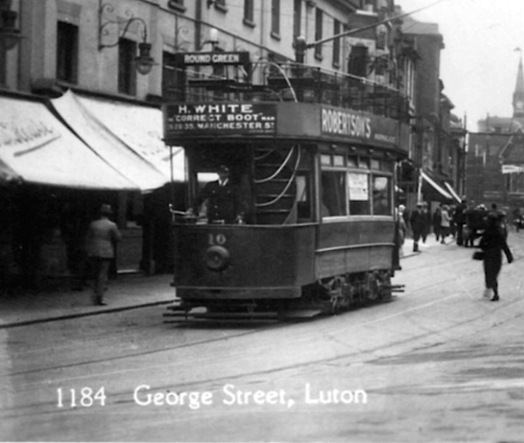Status Closed Route length 5.25 miles (8.45 km) Close 16 April 1932 | Propulsion system(s) Electric Open 21 February 1908 | |
 | ||
Track gauge 4 ft 8 ⁄2 in (1,435 mm) | ||
Luton Corporation Tramways served the town of Luton in Bedfordshire from 21 February 1908 until 16 April 1932.
Contents
History
In 1904, Luton Corporation applied for a Tramways Provisional Order, and this was confirmed and granted in 1905. The corporation issued out the work to competitive tender, and the contract was secured by White & Co on 19 March 1907.
The tramway was constructed in 4½ months, work beginning on 7 October 1907. The total cost, including the 12 tramcars, was £63,000 (equivalent to £6,010,000 in 2015).
The official inauguration took place on 23 February 1908. In 1909 the lease transferred to Balfour, Beatty and Co, and Luton Corporation took over the running of the system some years later.
In 1925, the tramways made a profit of £2,000 (equivalent to £103,000 in 2015).
Infrastructure
The complete system opened in 1908, and had five routes originating at the Town Hall:
Tramcars
The fleet, in a livery of grass green with ivory window frames and rocker panels, consisted of:
In 1923, a single deck car was purchased from Glasgow Corporation Tramways as an economy measure.
Closure
Towards the end of 1930, the Eastern National Omnibus Company made an offer to purchase the Luton tramways for £64,000 (equivalent to £3,650,000 in 2015). The offer was accepted by the Council on 20 January 1931. On 12 May 1932, the council re-affirmed its decision to sell out to the Eastern National Omnibus Company. However, it was forced to rescind its decision, and eventually decided to operate its own buses in place of the trams.
The tramway system closed on 16 April 1932 and was replaced by the motorbuses of Luton Corporation.
Preserved tramcar
Luton's only single deck tram is being restored, for static display, at Stockwood Discovery Centre.
Uncovered tramlines
On Monday 3 February 2014 a section of road was dug up by contractors during the process of building a new road (to run alongside the current railway lines) at the junction of Old Bedford Road and Midland Road, Luton. Following removal of tarmac and cobblestones a section of single tram line was clearly visible still buried in the road.
